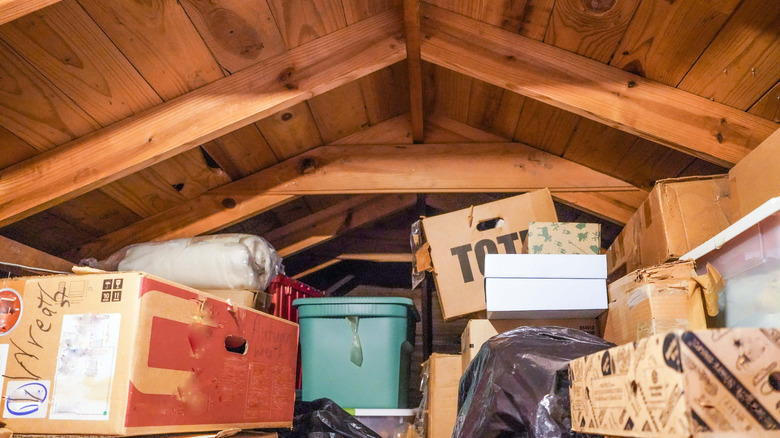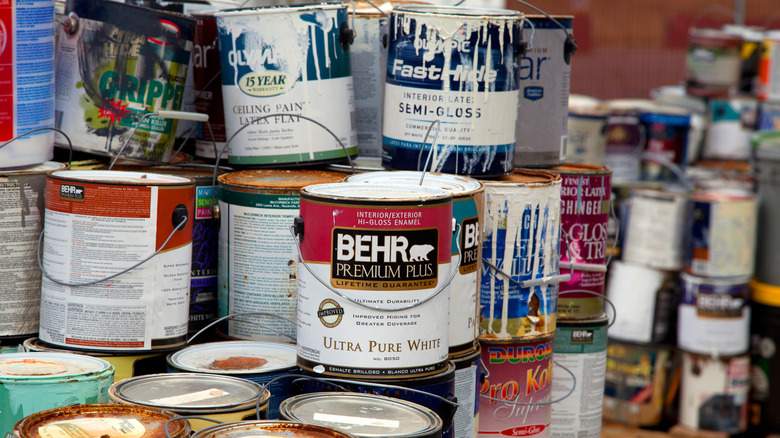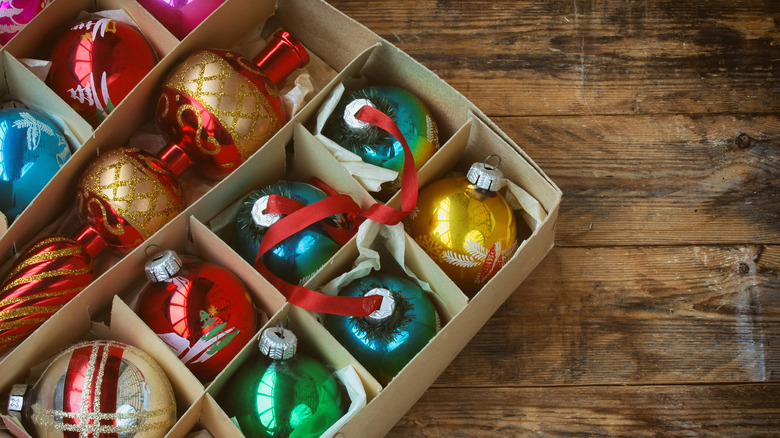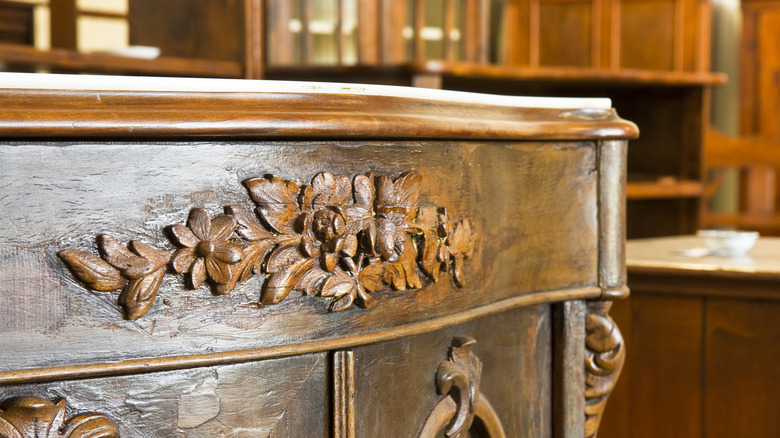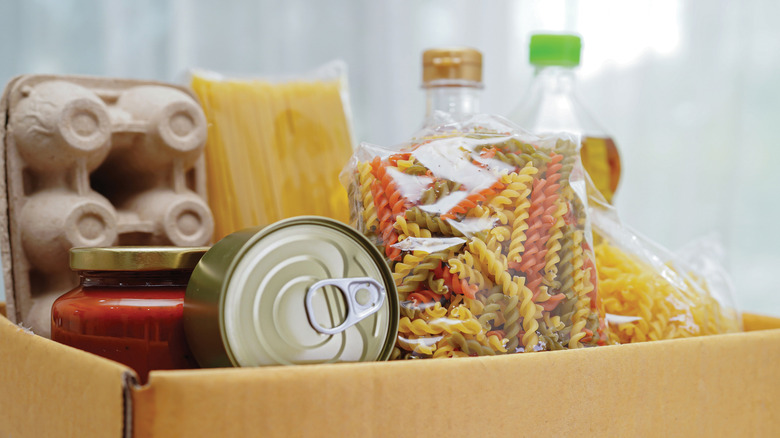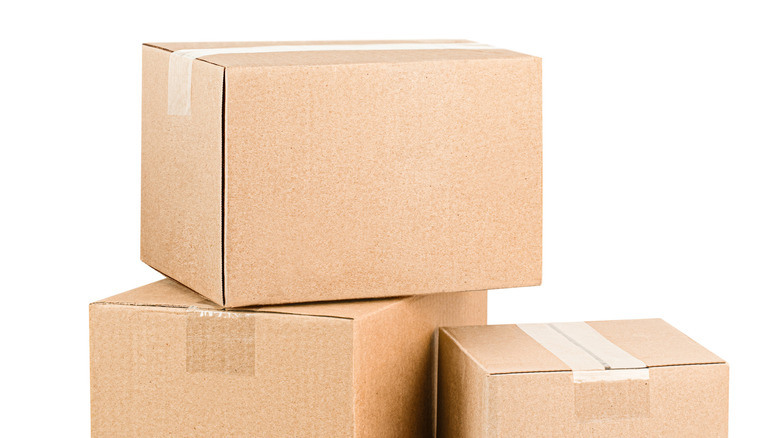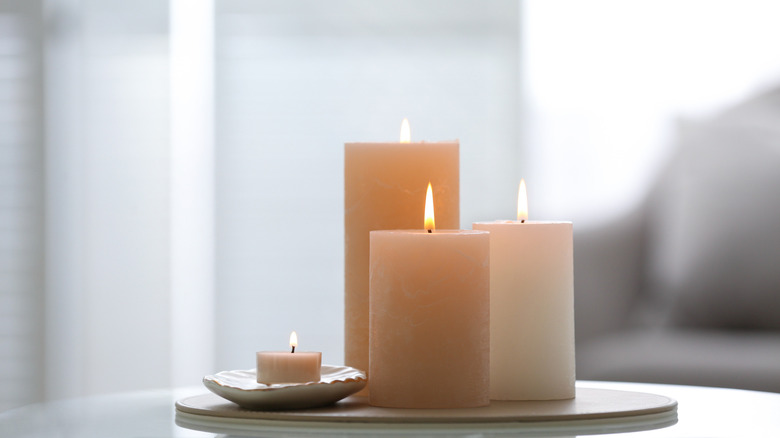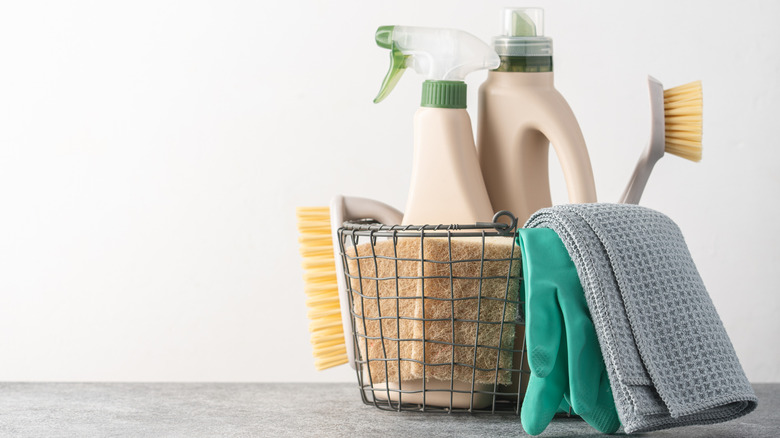15 Things You Should Never Store In Your Loft Space
If your home boasts a loft or attic, it can be a great place to store certain items and make space below, in the main area. While these areas are beneficial for a number of reasons, some articles should never be kept up there. It can be confusing to determine what will do well in a loft and what could be damaged over time, but the following tips will allow you to sort through everything and keep only safe items up there.
Your attic is the highest point in your home, which means it can be more exposed to the elements than the rest of the dwelling. Hot summers could mean that anything being stored in the loft may succumb to heat damage, while cold or damp weather can seep through cracks or edges and create mold, mildew, or other issues. According to Attic Solutions, unless you plan to remodel your loft specifically for storage, most spaces don't offer moisture control or ventilation to accommodate it. Attics can also be the ideal spot for pests, exposing your articles to chewing or destruction. So, when organizing this space in your home, keep the following items in another location, regardless of how convenient it might be to store them there.
1. Paint
After a home project, you might have leftover paint to store. While it might be tempting to hide these away in your loft, a lot of standard pigments are made with oil or latex, both of which can react badly with heat. Oil-based substances can combust if they get too hot, so store paint in a cool, dry space.
2. Christmas décor
Your Christmas decorations come out once a year to fill your home with holiday cheer, but leaving them in the attic can be detrimental. High temperatures cause colors to fade, plastic ornaments to melt, and fabrics to mold or mildew if exposed to water damage. These are better kept in plastic tubs within an indoor closet.
3. Old electronics
Whether you have an abundance of old electronics or just a few unused items, keeping them in your loft could ruin them. The attic sits directly under bright sunlight, so heat can seep through the roof and warp everything from TVs to computers. If you need these items, store them in a dry place within your home.
4. Wood items
Wooden furniture or other items can take up a lot of space, but keeping them in the loft isn't advisable. Woodworms, moisture, pests, and even heat can all cause the material to fall into disrepair. Water can sneak in through the roof and cause rot, too, so give older items away, sell them, or repurpose them.
5. Food
If you live somewhere that experiences high temperatures in the spring and summer, don't keep food, including canned items, in the loft. Between the warm weather and the stifling atmosphere of the attic, even non-perishable goods can go bad. Mice and other pests can find ways into the food, too, contaminating it. Store excess in a pantry or cupboard.
6. Wine
Just like with food, wine can easily succumb to hot climates, rendering it undrinkable. This drink benefits from an area where the temperature remains constant throughout the day, and the loft can change drastically depending on the weather. Keep it in a wine cellar, pantry, or cooler instead, ensuring it stays good until it's ready to be consumed.
7. Cardboard
Cardboard can easily deteriorate in damp conditions, and if your attic has moisture buildup, the material can turn moldy. If water seeps through the boxes, anything inside them could be damaged, too. Pests also like to rip up cardboard to build nests and hideaways, so keep these in a storage unit or other sealed areas away from moisture.
8. Documents
Holding important documents in your loft could be bad for them. Intense heat causes fading, while damp conditions create mildew. If the items are of great importance, keep them in an office or closet for safekeeping; otherwise, sort through everything and get rid of what isn't of great importance to reduce clutter and the need for attic storage.
9. Leather items
If you have leather furniture, antiques, or even clothing, avoid keeping these in your loft. It is prone to humidity, which is detrimental to leather. Cracks, dryness, or even mold can grow on the material, which could render it purposeless or ruin it. Repairing leather is hard, so store anything made with this medium in a dry place.
10. Art and paintings
If you have a fully finished attic space with regulated temperature, your paintings might be okay there, but the temp in a loft can fluctuate too much to keep them in good condition. Avoid losing priceless works of art by keeping them inside your house's main part or in mirror boxes standing upright in a controlled climate.
11. Instruments
Instruments aren't meant to be kept in loft spaces because extreme heat or cold can bend the strings and warp the wood. Also, cases with fabric lining can mold when exposed to damp conditions. This affects the items inside, too, so place them in a space where the climate is constant.
12. Wax-based objects
Candles and other wax-based items will melt if they are placed in areas with excessive heat. While a lit candle is supposed to melt down, losing unused wax to high temperatures is a waste. Place candles out for display or use them in the house to avoid a waxy mess in the loft.
13. Wool fabrics
While wool looks and feels good when being used, if it is stored where moisture can accumulate, the fabric can be ruined and even rot away. Moths, mice, and other pests can also eat away at silk, wool, and natural materials, so keep them in a closet within the house instead of boxed or hung in the loft.
14. Books
Like with your important documents, your books' pages are open to the constant flux in the atmosphere that can happen within the attic. Too much warmth can cause fading, while moisture can make the paper rot. Humidity will also create curling and change the shape of paperbacks. These are better kept on shelves in a controlled environment.
15. Cleaning products
Cleaning products contain chemicals that can become hazardous in the wrong climate. Your loft is susceptible to extreme temperature changes, and the ingredients in household products can release harmful gases. They are also usually flammable, which creates a risk in the hotter months. Keep these items below your sink or in a pantry, not in the loft.
